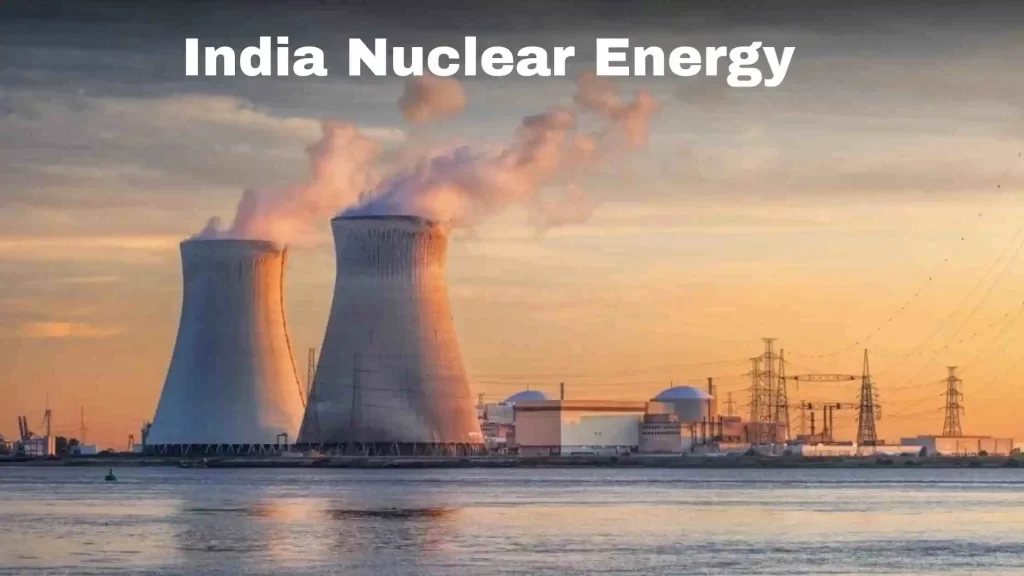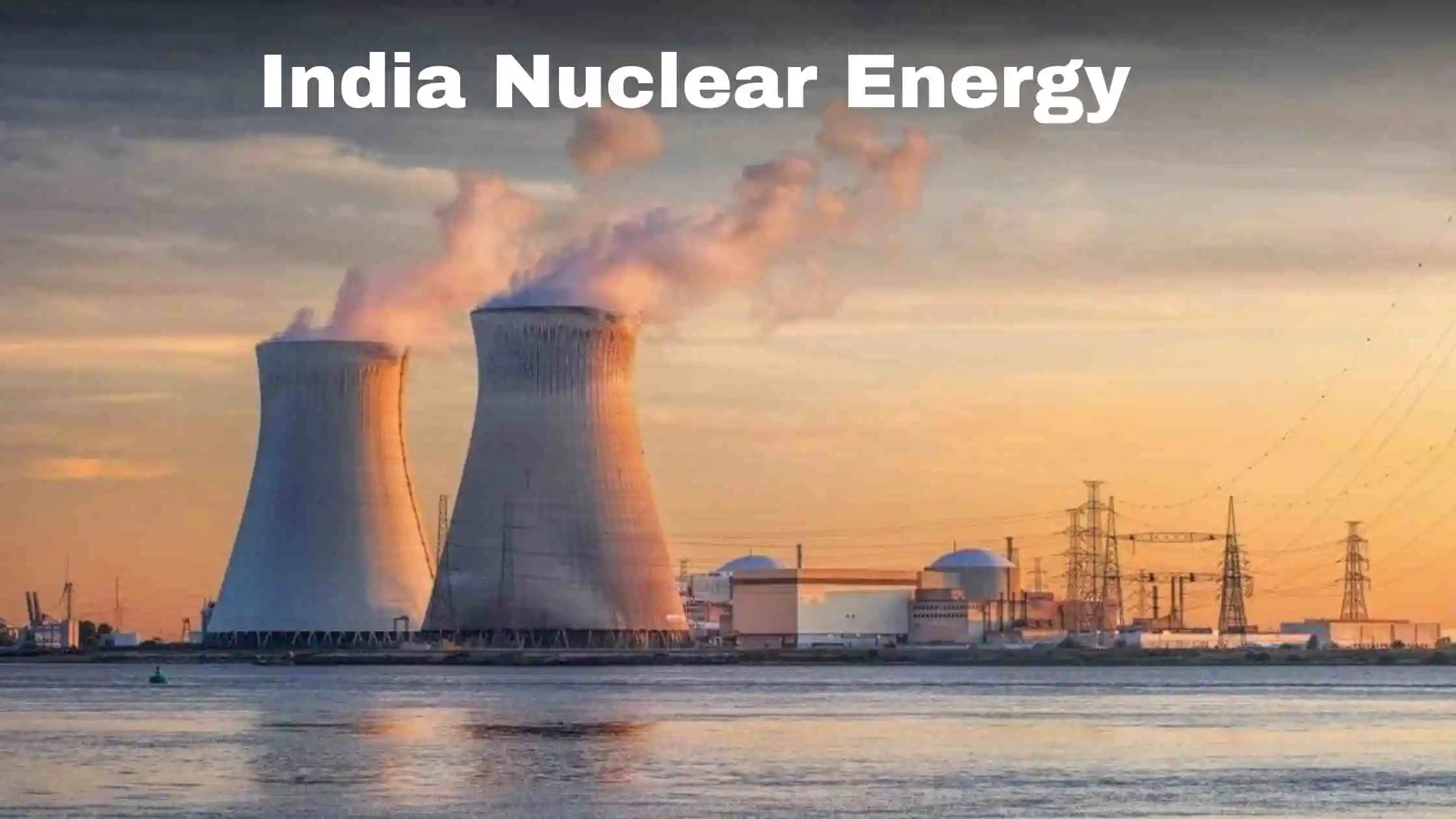
India Nuclear Energy: According to a report titled ‘Synchronizing Energy Transition towards Net Zero: Affordable and Clean Energy for All’, India aims to increase its nuclear power generation from the current level of over 8,000 MW to 1 lakh MW by 2047. To do.
This report was necessary because previous studies on India’s energy transition had ignored nuclear power, citing high costs and public resistance.
The Department of Atomic Energy is preparing a vision document for the ‘Amrit Kaal’, which includes a plan to reach a nuclear capacity of about 100 GW by 2047. Breeder reactors will contribute 3 GW of nuclear power, while 17.6 GW will come from light water reactors built with international cooperation and another 40-45 GW will come from pressurized heavy water reactors.
India Nuclear Energy Roadmap
About the key of Nuclear energy report
- According to the assessment, India would need to develop infrastructure for nuclear power and flexible grid infrastructure to support renewable energy if it wishes to phase out its usage of coal over the next three decades. And storage should be constructed.
- The report also recommends that if India continues to depend on coal, it should explore bioenergy with carbon dioxide technologies (CDR), such as carbon capture and storage (BECCS) and CCUS, to realize its long-term potential. Should be installed.
Main types of India Nuclear Energy
Pressurized Water Reactor (PWR): The most popular kind is called a pressurized water reactor (PWR). They are used for power generation in approximately 300 reactors and for naval propulsion in several hundred reactors. The PWR design was originally used for submarine power plants. Ordinary water serves as both a moderator and a coolant in PWRs.
Boiling Water Reactor (BWR): This type of reactor is similar to a PWR, but has only one circuit in which the water is at a lower pressure than normal. Due to this it starts boiling in the core at about 285°C. The reactor works as steam with 12-15% water present in the top part of the core. It has less moderating effect and thus efficiency.
Pressurized Heavy Water Reactor (PHWR): The PHWR reactor was developed in Canada as CANDU in the 1950s and in India since the 1980s. PHWRs use natural uranium oxide as fuel, requiring heavy water (D2O) as a more efficient moderator.
Nuclear energy as a deterrent for the nation
| Purpose: | Strategic use of nuclear capabilities to deter potential adversaries from hostile action by threatening devastating retaliation in the event of an attack. |
| MAD Doctrine: | Nuclear deterrence relies on the principle of Mutually Assured Destruction (MAD), in which the possibility of destructive consequences discourages adversaries from initiating conflict. |
| Deterrence: | The credible threat of nuclear retaliation can deter adversaries from launching military attacks or engaging in provocative military activities, thus promoting stability and preventing conflicts from escalating. |
| Increasing global influence: | Nuclear capabilities can also increase a country’s diplomatic and geopolitical influence and strengthen a country’s position on the global stage and give it greater leverage in international negotiations and alliances. |
| Concerns: | Reliance on nuclear deterrence also raises concerns regarding the following risks: Nuclear Proliferation Accidental or unauthorized use of nuclear weapons. The possibility of an arms race between nations. |
Nuclear Energy
| Introduction | Nuclear energy is a form of energy created from the core of atoms, protons and neutrons. |
| Production Methods: | This energy source can be produced in two ways: |
| Nuclear Fission: | When the nuclei of atoms split into many parts. |
| Nuclear Fusion: | When nuclei fuse together. |
| Present | Today, worldwide, nuclear energy is used to generate electricity through nuclear fission, while the technology to generate electricity from nuclear fusion is in the research and development stage. |
Background of India’s Nuclear Energy Program
| Atomic Energy Commission (AEC): | Homi J. AEC, established in 1948 under the leadership of Bhabha, initiated India’s nuclear programme. |
| Atomic Energy Establishment: | It was established in the year 1954, which later became Bhabha Atomic Research Center (BARC). |
| Nuclear Energy: | India’s first nuclear power plant was commissioned in the year 1969 at Tarapur, Maharashtra. |
| Pokhran Test: | India demonstrated its nuclear capabilities to the world with peaceful nuclear explosions at Pokhran in the year 1974 and later in the year 1998. |
| Indigenous Development: | After the Pokhran tests, India faced international sanctions, which led to the development of indigenous technology for both power generation and strategic purposes. |
Read more: South Korea: Artificial Sun KSTAR Sets New Record of 100 Million Degrees Celsius for 48 Seconds!
India’s three-phase Nuclear Energy Program
1. First stage
Pressurized Heavy Water Reactor (PHWR)
In this phase, natural uranium is used as fuel in PHWR. The uranium-235 isotope undergoes fission to produce Nuclear energy, while the uranium-238 isotope absorbs neutrons to produce plutonium-239.
2. Second Phase
Fast Breeder Reactor (FBR)
The second stage uses plutonium-239 obtained from the first stage as fuel in the FBR. These reactors produce more fuel than they consume. The resulting material, a mixture of plutonium and uranium, is reprocessed to extract plutonium for use in fuel.
3. Third phase
Thorium Based Reactors (TBR)
In the final step, thorium-232 is converted into uranium-233 in a reactor. After this, uranium-233 will serve as fuel.
Philosophy of Amrit Kaal: Strategy of Department of Atomic Energy
The Department of Atomic Energy is preparing a vision document for the ‘Amrit Kaal‘, which outlines a plan to achieve nuclear capacity of about 100 GW by 2047. This roadmap includes leveraging different types of reactors and promoting international cooperation to meet energy demands sustainably.
What is India’s current nuclear power generation capacity?
India currently has a nuclear power generation capacity of over 8,000 MW.
What is the target for India’s nuclear power generation by 2047?
India aims to increase its nuclear power generation capacity to 1 lakh MW (100 GW) by 2047.
What are the main types of nuclear reactors used in India?
The main types of nuclear reactors in India include Pressurized Water Reactors (PWR), Boiling Water Reactors (BWR), and Pressurized Heavy Water Reactors (PHWR).

